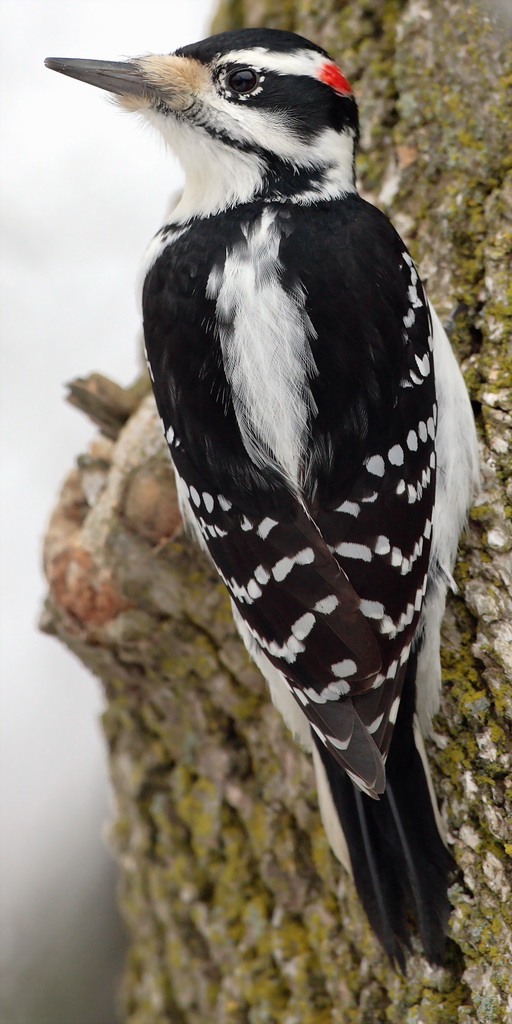Hairy Woodpecker
From Wikipedia, the free encyclopedia
[Photo] Picoides villosus, Hairy Woodpecker, male -- Whitby, Ontario, Canada -- 2006 January. The red on the back of the head identifies this as a male.
The Hairy Woodpecker (Picoides villosus) is a medium-sized woodpecker.
Adults are mainly black on the upper parts and wings, with a white back, throat and belly and white spotting on the wings. There is a white bar above and below the eye. They have a black tail with white outer feathers. Adult males have a red patch on the back of the head.
It is virtually identical in plumage pattern and coloration to the much smaller Downy Woodpecker, which also has a shorter bill relative to the size of its head. These two species are not at all closely related, however, and are to be separated in different genera (Weibel & Moore, 2005; Moore et al., 2006). Their outward similarity is a spectacular example of convergent evolution. As to why this convergence has evolved, only tentative hypotheses have been advanced; it is interesting to note in any case that due to the considerable size difference, ecological competition between the two species is rather slight.
Their breeding habitat is forested areas with large trees across most of North America to Central America. They nest in a tree cavity, excavated by the nesting pair.
These birds are mostly permanent residents. Birds in the extreme north may migrate further south; birds in mountainous areas may move to lower elevations.
These birds forage on trees, often turning over bark or excavating to uncover insects. They mainly eat insects, also fruits, berries and nuts, sometimes tree sap.
http://en.wikipedia.org/wiki/Hairy_Woodpecker
| The text in this page is based on the copyrighted Wikipedia article shown in above URL. It is used under the GNU Free Documentation License. You may redistribute it, verbatim or modified, providing that you comply with the terms of the GFDL. |
|

